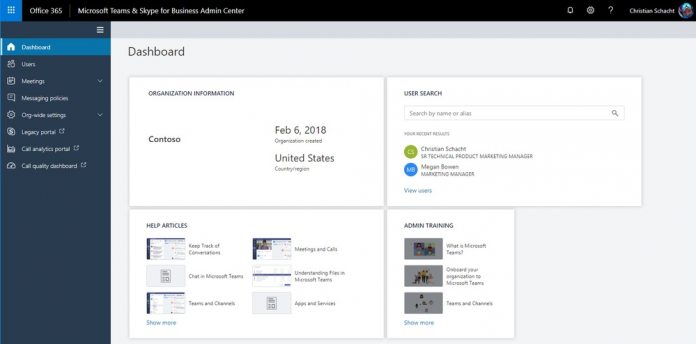Additionally, the Admin Center will bring a unified experience including a Call Quality Dashboard and Call Analytics. IT professionals can manage Teams settings at a user level and gain end-to-end insights. Microsoft has detailed all the features in a blog post today:
Microsoft Teams messaging policy: Create custom policies for messaging scenarios for your users. User management: Assign policies and configure your users. Microsoft Teams guest messaging settings: Control the messaging capabilities for guest accounts in Microsoft Teams. Federation settings: Manage federation between tenants for Microsoft Teams and Skype for Business. (Please note that federation for Microsoft Teams and Skype for Business will roll out in stages and this setting might not be visible for you during the initial rollout.) Audio conferencing: Configure dial-in numbers and settings for Microsoft Teams and Skype for Business.
Skype for Business Integration
Microsoft announced last year it will fold Skype for Business into Microsoft Teams. The integration is happening over time and will see Teams evolve to have more Skype features. For example, in December, the company brought Advanced Calling from Skype for Business into Teams. Last year, Microsoft introduced a roadmap for its Skype for Business/Teams integration. Among the new features making the migration are:
Messaging — Screen sharing during chat and federation between companies Meetings — Meeting room support with Skype Room Systems and cloud video interoperability capabilities that allow third party meeting room devices to connect to Teams meetings Calling — Use your existing telco voice line to activate calling services in Office 365. Other features — Record a meeting and store it in Teams, have transcription added, and be able to search the meeting for key terms




